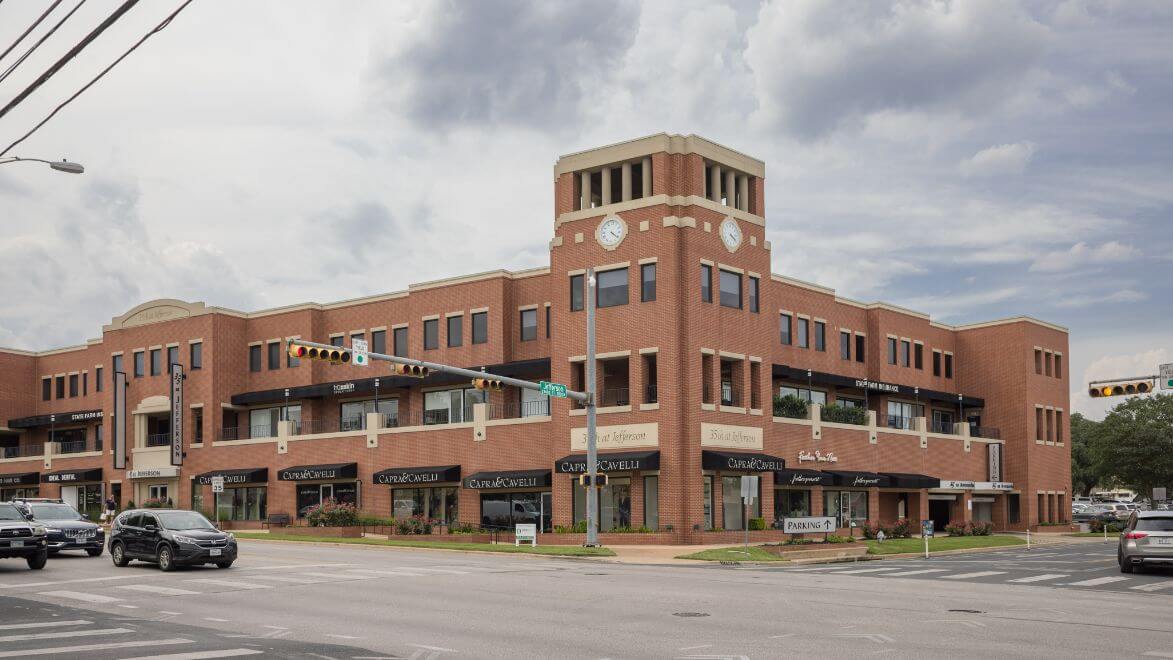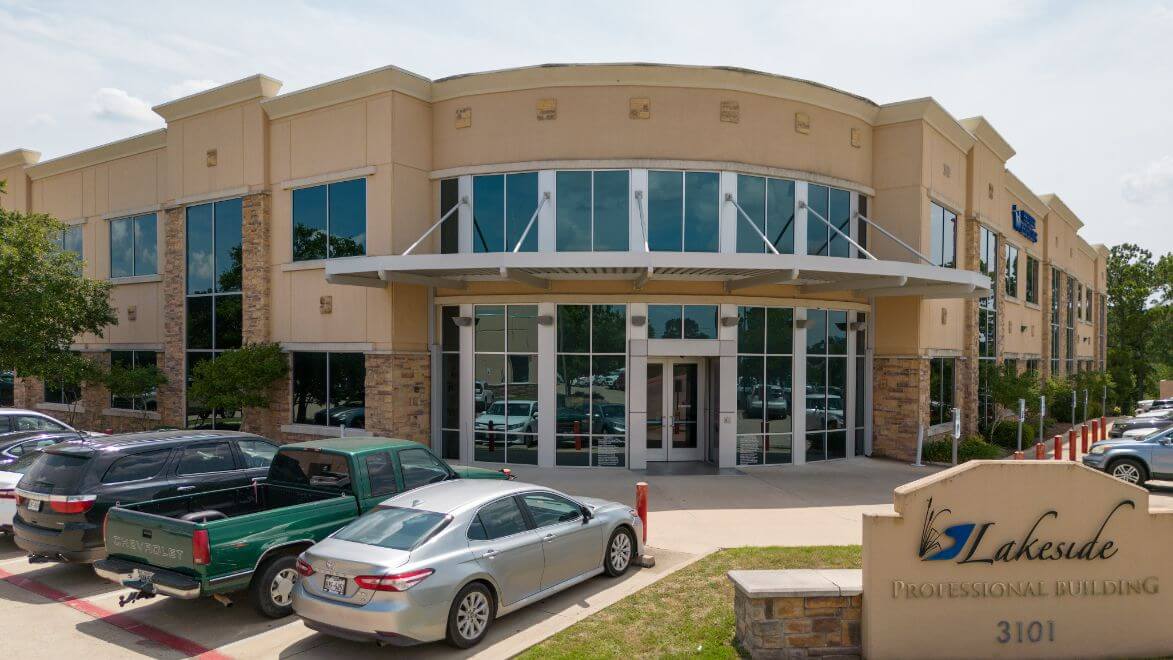Chemical Peels
Revitalize Your Skin with Expert Chemical Peels in Austin, TX
Various forms of chemical peels have been used for centuries. Some of the earliest types of peels were utilized by the ancient Egyptians in the form of sour milk baths, which contained lactic acid. They noticed that after soaking in it, their skin was softened and smoothed. It wouldn’t be until the mid-1800s that an Austrian dermatologist began to use solutions of chemicals to treat various skin irregularities.
Modern chemical peels vary widely in strength and in their ability to cause controlled damage to the skin, so it is important to seek a professional to perform a peel to avoid serious complications. These solutions dissolve skin cells in the uppermost layers of the epidermis. As these cells are dissolved and begin to peel off, the cells in the underlying layers are signaled to move upwards to replace the missing top layer of skin.
During this process, new collagen and elastin are stimulated to help improve the look of fine lines and wrinkles. Brown spots begin to break up and slough off, and pores are exfoliated from the inside out, which can help with acne breakouts and temporarily reduce pore size. Some peels can even kill the bacteria that cause acne. The surface of your skin will appear smoother, more even-toned, and polished over time.
This treatment is safe to do on a regular basis as part of an overall maintenance program for healthier, glowing skin. Treatments spaced 4-6 weeks apart are recommended, depending on skin type and type of peel used. Results may be subtle or dramatic, depending on which chemical peel is recommended for your particular needs.
Chemical Peel Examples
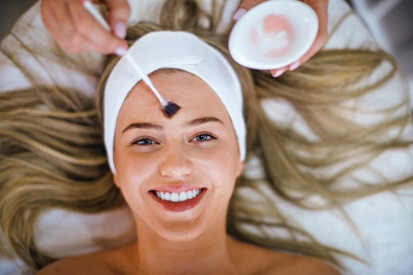
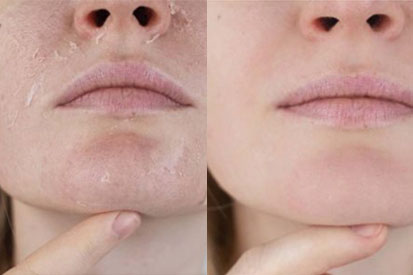

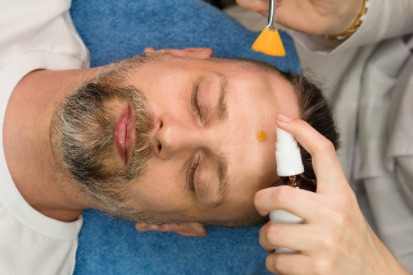
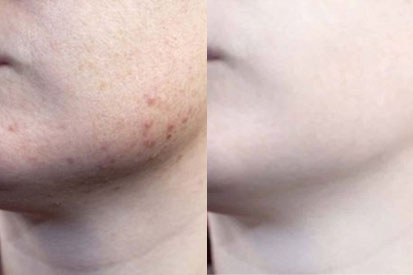
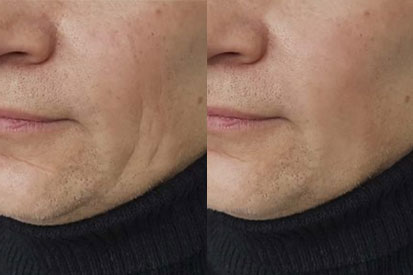
What areas can be treated with chemical peels?
- Neck
- Back
- Upper chest
- Backs of hands
- Any area of the body where improvement in your skin is desired
- It is important to note that the skin on the face is different from the skin on the rest of the body.
- Healing times usually take longer for the body than for the face.
- The degree of peeling can vary widely.
How Will My Skin Look After Chemical Peel Treatment?
- Mild to moderate redness that may last for a day or two, or possibly for several days after, depending on the type of acid used in your peel and your individual skin type.
- Your skin may feel more sensitive for a few days
- You may experience some acne breakouts in the days following your treatment, as the skin cells begin to turn over and congestion is purged from your skin.
What Should I Expect During My Chemical Peel Treatment
Some peels, such as glycolic, lactic, and mandelic acid peels, must be neutralized with a solution, while others, such as salicylic acid peels, are known as “self-neutralizing” and will automatically stop when they reach a certain endpoint. Depending on the type of peel being used, your skin may be rinsed to remove all traces of the acid, or the peel may be left on the skin. A soothing serum and a protective sunscreen will be applied, and you’re good to go for the rest of the day. You will need to avoid direct sun exposure, especially for the first few days after your peel. Most treatments take about 45-50 minutes, making this an ideal procedure for patients wanting a quick and effective way to rejuvenate their appearance and treat certain skin concerns.
How Do I Prepare For My Chemical Peel Treatment?
How Do I Care For My Skin After A Chemical Peel?
Any peeling you experience will depend primarily on the type of peel that was used, as well as your individual skin type. Some chemical peels result in very little visible peeling, while others may have peeling that lasts for several days. Peels that do cause profuse peeling can give you dramatic results, but you must have patience as the skin heals and be prepared for some social downtime, which can sometimes last up to a week. Even once all the peeling is resolved, your skin will still feel more sensitive, so keep that in mind as you resume your regular skincare routine.
And remember, a broad-spectrum sunscreen with SPF 30 or higher must be worn daily, and excessive sun exposure is discouraged during your series of treatments. This will ensure you are protecting the investment you are making in your skin and help discourage the formation of more sun damage and discoloration in your skin.
FAQs for Chemical Peels
Chemical peels are even more effective when paired or alternated with other treatments, including:
- Facials
- Microdermabrasion
- Dermaplaning
- Laser Genesis
- IPL Photofacial
- SkinPen microneedling
They can also be part of a facial rejuvenation plan that includes injectables such as Botox or Dysport and facial fillers like Juvéderm or Restylane. Let the team here at Tru-Skin Dermatology help you formulate a treatment plan to put your best face forward!
Both women and men who want an effective way to rejuvenate their skin are perfect candidates for chemical peels, as all skin types can be safely treated with various types of acids. This treatment is ideal for those looking to improve signs of aging, melasma, acne, dull-looking skin, large pores, and more. Healthy, glowing skin can be easily achieved through a series of treatments.
Almost everyone is a good candidate for a chemical peel, with the exception of patients who are pregnant or nursing. Additionally, if your skin is thin or extremely sensitive due to age or certain medications, you may not be a good candidate. If you have used isotretinoin (Accutane) within the past 12 months, please inform your technician, as this medication can interfere with your skin’s ability to heal itself. For those prone to cold sores, we recommend taking antiviral medication prior to your appointment. Patients with melasma, moderate to severe acne, or more advanced signs of aging may require several peels combined with therapeutic skincare products to see results.
Chemical peels can be performed initially in a series as often as 2-4 weeks apart, depending on the type of peel used. Most patients have a chemical peel once every 4-6 weeks as part of a maintenance regimen. Your technician can help determine which course of treatment is best for your individual needs. Results may be cumulative and take time, and you will notice increased improvement with each treatment.
Peeling can vary greatly between the different types of acid peels used and the person’s skin type. Generally, the drier and more sensitive a person’s skin is, the more visible peeling they may experience compared to someone with oilier skin using the same type of peel. Additionally, some peels dissolve and remove skin cells during the treatment process, so visible peeling may not occur later on. Some peeling is microscopic and not very noticeable. Due to the variability in acids and skin types, do not be disappointed if you don’t experience extensive peeling in the days following your peel; the acid has still done its job. Your technician can provide a better idea of what to expect based on your particular skin type and the type of peel being used.
Depending on the person and the skin conditions being treated, results usually last anywhere between 1-3 months but may last longer in some cases. Since chemical peels only remove the outermost layers of skin cells, and those cells are gradually replaced within a month or so, ongoing treatments are suggested. For the best results in retaining the benefits of a chemical peel, daily sun protection and the use of medical-grade skincare products are recommended, especially in the treatment of acne or melasma. Tru-Skin Dermatology can help you set up a customized skincare regimen to target your individual needs. We carry several lines of professional products to help you achieve your best skin possible. Call us today to start your journey to healthier-looking skin!
Watch: Tru-Skin Dermatology Chemical Peels
Chemical Peels at Tru-Skin Dermatology
For acne treatment, salicylic acid peels are highly effective. They exfoliate the skin and pores, normalize oil production, and kill C. acnes bacteria. Additionally, salicylic acid helps reduce inflammation, making it beneficial for both acne and rosacea, which are inflammatory skin conditions. TCA peels are great for improving textural irregularities, melasma, and congested pores, with penetration depth varying based on the strength used. We also offer renowned cosmetic peels like the VI Peel and The Perfect Derma Peel, which can cause up to a week of peeling and leave your skin fresh and glowing.
You can purchase an individual treatment if you wish, but as a series of treatments is recommended for best results, packages of 3 treatments are available and affordably priced. Our menu of services with pricing can be found HERE. At Tru-Skin Dermatology, we are dedicated to customizing your procedure plan for optimal results.
Featured Blogs

- Cosmetic Treatments
When it comes to having healthy and glowing skin, there is no better option than chemical peels. Read to learn more about the treatment and benefits.
Read More
- Botox
- Injectables or Fillers
- Cosmetic Treatments
Tru-Skin Dermatology provides patients with top-of-the-line dermatology fillers and injectables. Cosmetic injections can help reverse the signs of aging without surgical intervention.
Read More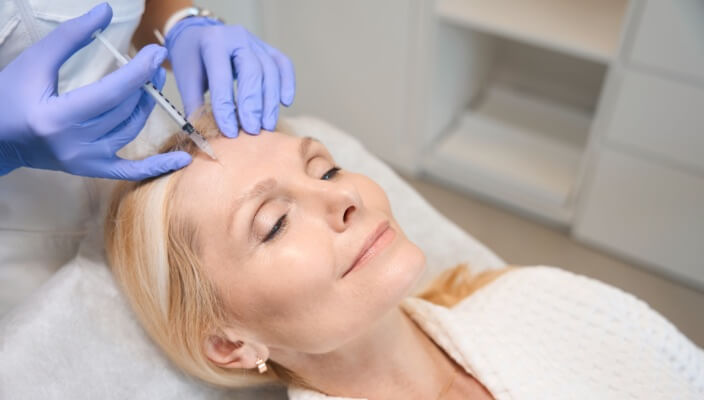
- Botox
- Injectables or Fillers
- Cosmetic Treatments
As we age, our skin loses its elasticity, and fine lines and wrinkles begin to appear. Injectable neurotoxins have become popular non-surgical treatments for reducing the signs of aging. Tru-Skin offers many options, read this blog to discover which may be best for you.
Read MoreFeatured Products
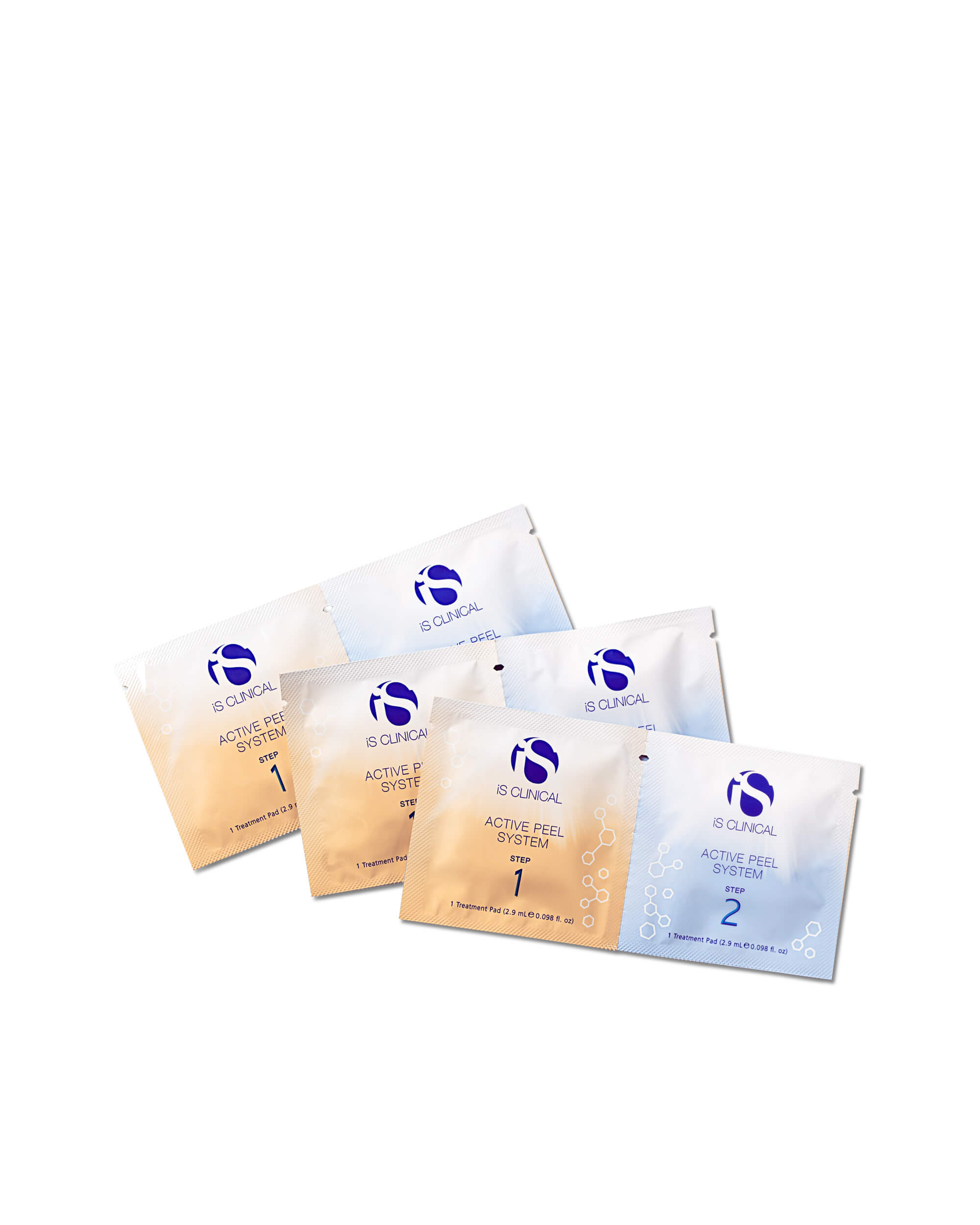
iS Clinical Active Peel System
The clinically advanced Active Peel System is a powerful yet gentle, fast-acting, two-step treatment designed to resurface and polish the skin while providing hydration, rejuvenation, and antioxidant protection. Designed to use every other day, this complete skin treatment helps to improve the appearance of skin tone and texture, resulting in a smooth, hydrated, and more youthful-looking complexion. Each towelette is precisely formulated for a unique experience while working together to deliver optimal results. Each box contains 15 treatment sets.
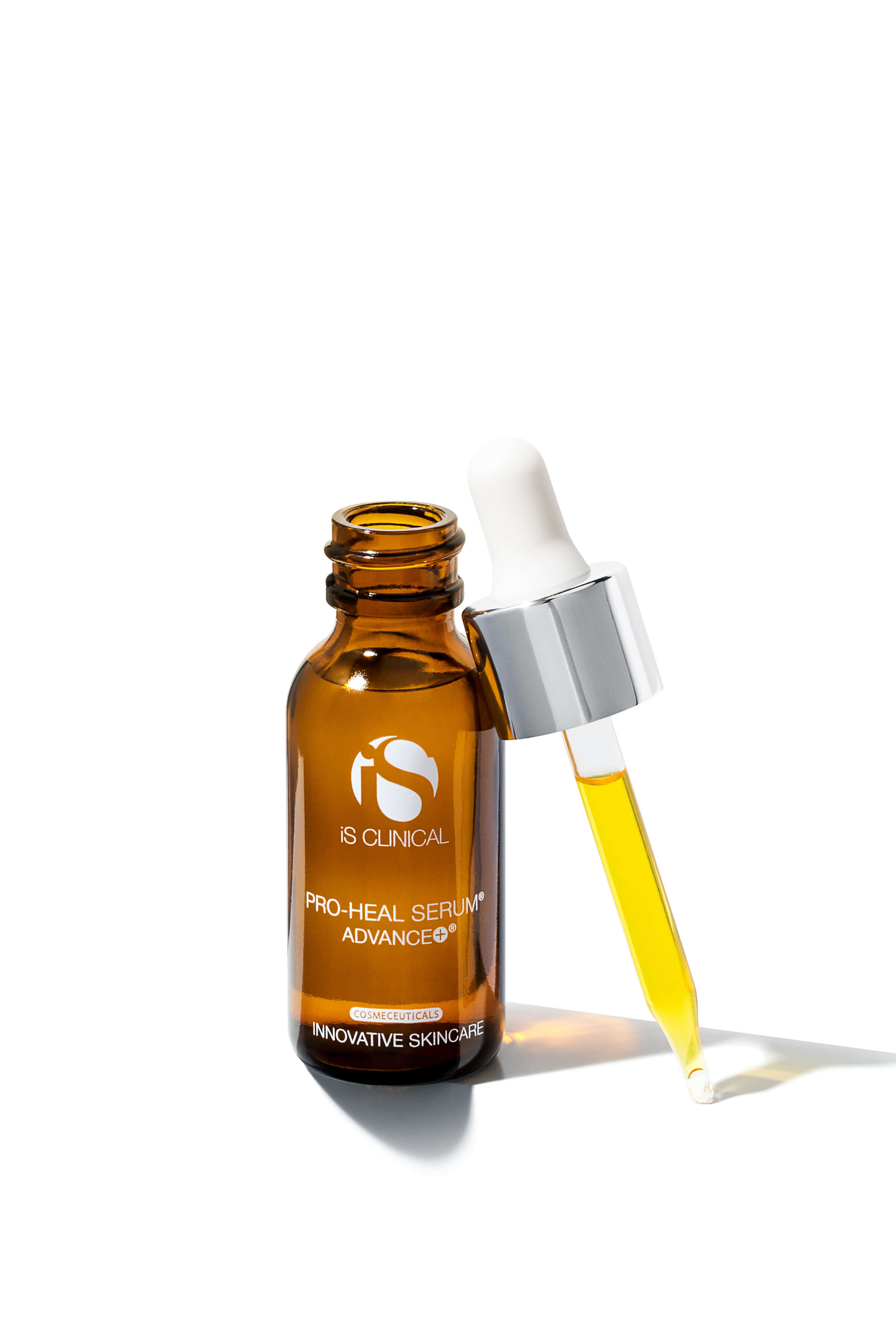
iS Clinical Pro Heal Serum Advance+
Pro-Heal Serum Advance+ features our scientifically advanced L-Ascorbic Acid (Vitamin C), combined with a superior form of Olive Leaf Extract and pure Vitamins E and A. This powerful formulation significantly increases antioxidant protection while helping improve the appearance of compromised, blemish-prone, and aging skin. 30 mL e 1 fl. oz.

